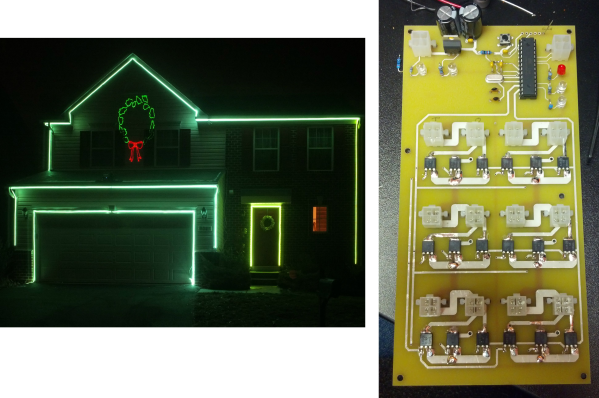
As [Medhi] was setting up his Christmas tree, he found a string with a few broken lights. Because he’d bought a cheap string of lights wired in series, of course one bulb was burnt out, rendering the entire string useless. His original game plan was to search through the entire strand for the broken bulb, but that’s the easy way out. His backup plan was to zap the broken bulb out of the string. After a few hours of figuring out what that meant, he came up with a way to fix a broken string of lights.
When a bulb burns out, the filament breaks creating an air argon gap between the two electrodes. By sending a huge voltage down the string, it should fire an arc through that gap, illuminating the burnt-out bulb for a brief time.
Experiments with socks and low humidity commenced, but it wasn’t until [Medhi] stuck his finger in a lighter that he found a better source of high voltage sparks. [Mr. Brows] connected the piezoelectric element to the plugs on his string of lights and… nothing happened. At least until he plugged the lights back in. Then, strangely, they worked. The reddit thread for the video says this behavior is due to an anti-fuse built into the bulb. When enough voltage goes through this anti-fuse, a thin sheet of insulator breaks down and allows dead bulbs to short themselves.
Hackaday head honcho [Mike] just got this method of finding dead Christmas lights to work, replacing 14 bulbs in a string of 100 lights. This leads us to an interesting question: why isn’t this simple method of fixing a string of Christmas lights common knowledge? You would think something this useful wouldn’t be introduced to the world via a YouTube video where someone repeatedly burns and shocks himself. You can, of course, buy something that does the same thing, but this is far too simple of a solution for a classic problem to pass under our noses for this long.
Continue reading “Fixing Christmas Lights And Shocking Yourself Silly” →



 Reader [pscmpf] really digs the scrolling light look of old marquee signs and as soon as he saw some Christmas lights with G40 bulbs, he was on his way to
Reader [pscmpf] really digs the scrolling light look of old marquee signs and as soon as he saw some Christmas lights with G40 bulbs, he was on his way to 













